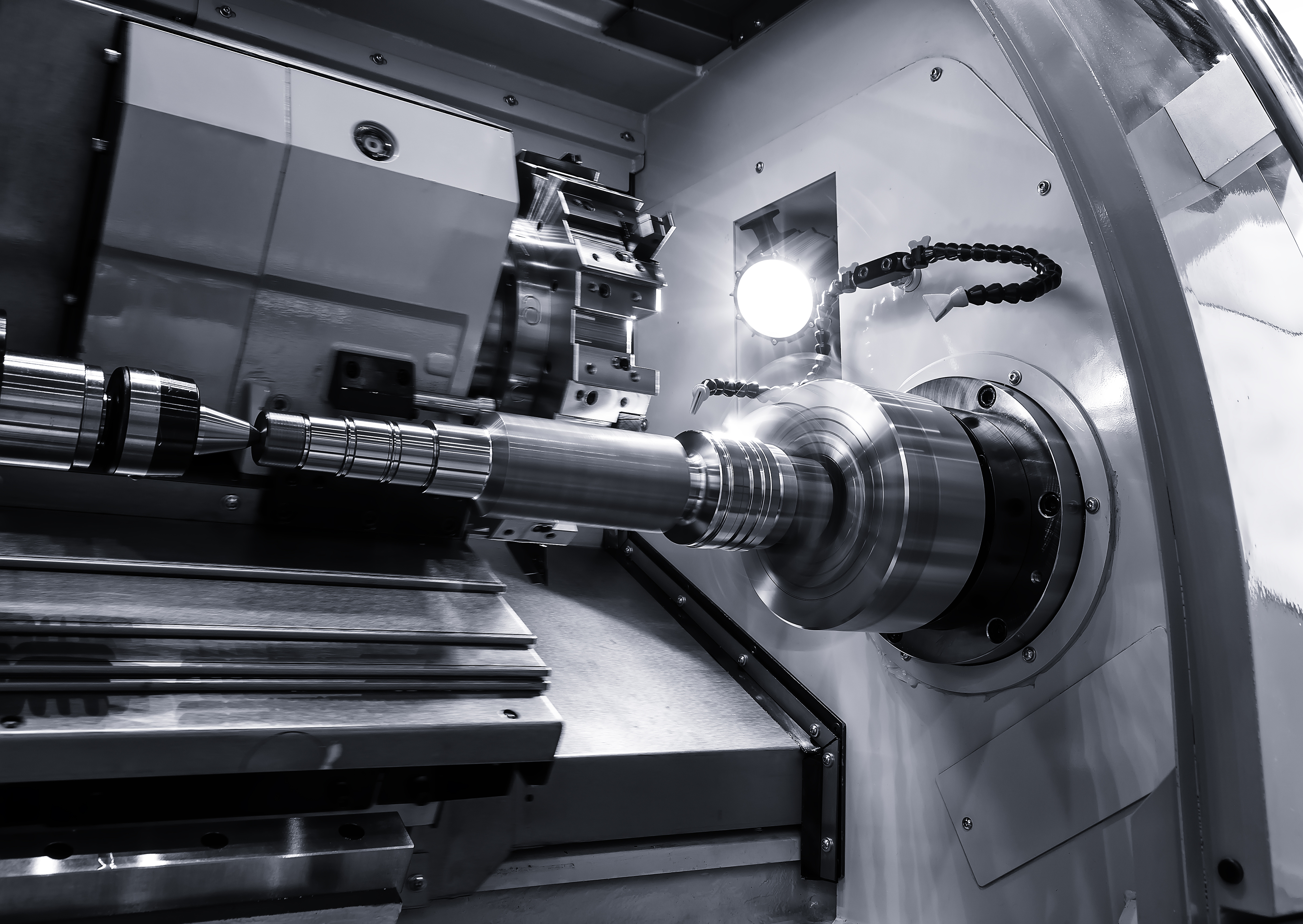
In the context of the manufacturing industry's transition to low-carbon practices, CNC machine tools—being high-energy-consuming equipment (with a single machining center consuming 15-30kW)—have their energy efficiency directly impacting enterprises' green production capabilities. Studies show that the effective cutting energy consumption of traditional machine tools accounts for only 20%-30% of total energy consumption, with the remaining energy lost to no-load operation, auxiliary equipment, and heat dissipation. Through systematic energy efficiency optimization, comprehensive energy consumption of machine tools can be reduced by 15%-40%, while minimizing environmental impacts such as cutting fluid evaporation and noise pollution. The following constructs a green and efficient operation system for CNC machine tools from four aspects: energy consumption composition, optimization technologies, green manufacturing models, and implementation paths.
The energy consumption of CNC machine tools consists of main energy consumption and auxiliary energy consumption, with specific distributions as follows:
Main Drive System: Includes the spindle motor (accounting for 30%-40% of total energy consumption) and feed servo motors (15%-25%). Its energy consumption dynamically changes with cutting loads, dropping to 10%-20% of rated power during no-load conditions (e.g., spindle idling).
Auxiliary Systems: Cooling pumps, lubrication pumps, hydraulic stations, and other auxiliary equipment (15%-20%). These devices mostly operate at constant speeds, maintaining basic energy consumption regardless of machining status, making them key areas for energy savings.
Control and Lighting Systems: CNC systems, operation panels, and workshop lighting (5%-10%). Energy consumption is relatively stable, but cumulative energy from long-term standby (5-10W power) cannot be ignored.
Load Correlation: Cutting energy consumption is positively correlated with material removal rate (e.g., milling 45 steel consumes approximately 0.05-0.1kW·h per cm³ of material removed). During heavy cutting, main motor energy consumption can exceed 80% of rated power.
Time Distribution: In mass production, effective cutting time typically accounts for 30%-50% of total time, with the remaining time spent on tool changes, workpiece loading/unloading, and program debugging—stages with extremely low energy efficiency.
Equipment Differences: Energy consumption varies significantly between machine tool types. For example, heavy boring and milling machines have a standby power of 5kW, while precision grinders, due to cooling requirements, have auxiliary system energy consumption accounting for up to 30%.
Variable Frequency Speed Regulation: Adopting vector frequency conversion control for spindle and feed motors enables "on-demand speed adjustment." For instance, reducing spindle speed from 3000r/min to 1000r/min can lower energy consumption by over 60%.
Servo Motor Optimization: Replacing traditional asynchronous motors with permanent magnet synchronous motors improves efficiency by 5%-10%, with more significant energy savings at low speeds (below 500r/min).
Energy Recovery Devices: Installing capacitor energy storage modules on vertical axes (e.g., Z-axis of vertical machining centers) recovers electrical energy during braking (5%-8% of total energy), which is then used to power auxiliary systems.
Intelligent Start-Stop Control: Sensors detect machining status, automatically shutting down cooling and lubrication pumps during downtime exceeding 30 seconds, with rapid restart (delay ≤1 second). This reduces auxiliary energy consumption by 30%-40%.
Demand-Based Flow Regulation: Converting cooling and hydraulic pumps to variable-displacement types, dynamically adjusting flow based on cutting loads (e.g., 50% flow reduction during light cutting) with pressure sensors for closed-loop control.
No-Load Energy Suppression: CNC systems include a "deep sleep" mode, cutting power to non-essential modules after 10 minutes of standby, reducing standby power from 50W to below 5W.
Cutting Fluid Regeneration: Centrifugal separation and filtration (0.1μm precision) remove iron chips and sludge from cutting fluids, extending service life by 2-3 times, reducing waste fluid discharge by over 80%.
Tool Remanufacturing: Re-grinding and coating restoration of carbide tools recover over 80% of cutting performance, increasing material utilization from 30% to 70% and reducing costs by 50%.
Machine Tool Remanufacturing: Retrofitting old machines with CNC systems, retaining bed and column structures while replacing spindles and servo systems, reduces energy consumption by 30%-50% and minimizes solid waste from machine disposal.
Low-Toxicity Cutting Fluids: Plant-based cutting fluids (biodegradability >90%) replace traditional mineral oil-based products, reducing VOC emissions and lowering health risks for operators.
Noise Control: Optimizing spindle dynamic balance (residual unbalance <0.5g·mm) and adding soundproof enclosures (reducing noise by 20-30dB) control machine noise below 85dB, meeting industrial noise limits.
Energy-Saving Machine Design: Modular structures (reducing material use by 15%), low-thermal-inertia spindles (40% less preheating energy), and efficient heat dissipation (25% lower cooling system energy) minimize environmental impact.
Energy Efficiency Monitoring Platforms: IoT-based real-time energy data collection (1-second sampling intervals) generates energy analysis reports, identifying high-energy-consuming equipment (e.g., monthly consumption exceeding 500kW·h) for targeted retrofits.
Process Optimization Workflows: Establishing "energy consumption-quality-efficiency" balance models, e.g., optimizing cutting parameters via simulation software (Siemens NX) before mass production to reduce energy consumption by 10%-15% while ensuring precision.
Green Procurement Standards: Incorporating energy efficiency indicators (e.g., material removal energy ≤0.1kW·h/cm³) into equipment purchases, prioritizing energy-saving certified products (meeting GB/T 22395-2020 Class 1 efficiency).
Mass Production: Promoting intelligent start-stop and variable frequency technologies, 配合 flexible production lines to balance equipment loads (maintaining 60%-70% load rates) and avoid peak energy consumption.
Precision Machining: Adopting dry cutting and minimal quantity lubrication to reduce cooling system energy, while using thermal error compensation to lower rework energy from temperature fluctuations.
Old Equipment Retrofits: Prioritizing 5-10-year-old machines for frequency conversion and auxiliary system upgrades, with typical payback periods of 1-2 years—far shorter than new equipment investments.
Energy efficiency optimization for CNC machines is a multi-dimensional system engineering integrating "technology-management-process." Its core lies not only in reducing energy costs but also in enhancing enterprises' sustainable competitiveness through green manufacturing models. As carbon neutrality goals advance, energy efficiency will become a key performance indicator for machine tools, with integrated intelligent, lightweight, and circular technologies driving CNC machines toward "full-lifecycle carbon neutrality." Enterprises should adopt progressive paths—prioritizing low-cost retrofits, breakthroughs in critical processes, and comprehensive system building—to achieve steady progress in green manufacturing while ensuring quality and efficiency.
